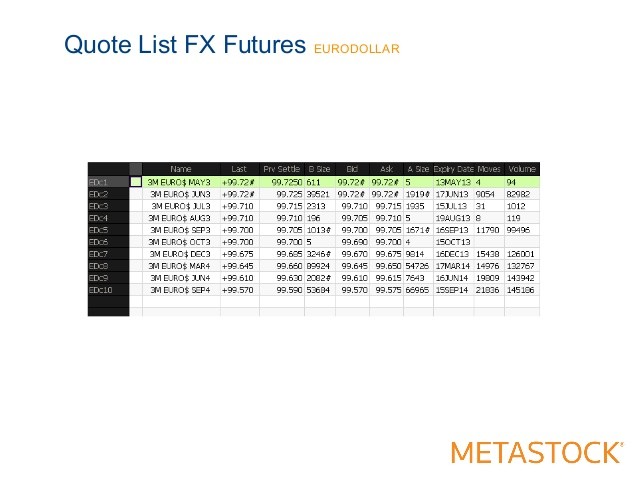Forex Exploring the Eurodollar Market
Post on: 19 Апрель, 2015 No Comment

Forex: Exploring the Eurodollar Market
The term ‘Eurodollar market’ is really a misnomer, because the market deals in currencies other than dollars. However, dollars do account for about 85 to 90 percent of all the transactions carried out on it, and so it is customarily called the Eurodollar market.
Moreover, the market is assumed to deal exclusively in dollars. What is said about Eurodollar transactions applies generally to transactions in other Eurocurrencies.
Foreigners who receive payment in dollars in the form of drafts, checks, and bills of exchange and who want to retain the dollars and enjoy the higher rates of interest offered by their banks (in comparison with U.S. banks), deposit the proceeds of the instruments in the commercial banks of their own or other countries outside the United States in dollar-denominated accounts. The Eurodollar market originated from that willingness to keep deposits in dollars and of the banks to accept and re-lend such deposits.
Eurodollars may be said to originate in two ways: from primary sources and from dollar loans. The primary sources include the transfer of deposits in U.S. banks from U.S. residents to nonresidents.
They also include dollars received in exchange for foreign currencies and the proceeds of dollar-denominated money and credit instruments that are deposited dollar-denominated accounts in foreign banks. Other, or non-primary, Eurodollars originate when foreign banks and residents make dollar loans against their dollar deposits.
Since the Eurodollar market deals most often in short-term funds up to one year, Eurodollars have somewhat restricted uses. They are widely employed to finance foreign trade transactions, and that market has added a new dimension to the more conventional foreign trade financing facilities. They are also used by business firms abroad, including the subsidiaries of American firms, as a source of working capital.
Foreign central banks have used the Eurodollar market as a source of additional dollar reserves and as an outlet for excess reserves. In recent years, American commercial banks have had recourse to the market on a large scale to adjust their U.S. liquidity and reserve positions, as well as to secure supplementary funds to meet customer credit demands.
Recent (1968-1969) pressures on U.S. bank reserves, the declines in the large negotiable certificates of deposit (CDs), and exceptionally heavy demands for credit induced American banks to borrow heavily on the Eurodollar market at that time.
More stringent controls on U.S. direct investments abroad have increased the number of bond flotation in foreign markets by American corporations. The proceeds of those loans are often placed temporarily in Eurodollar deposits. Apparently, substantial amounts of foreign funds that were formerly used to purchase U.S. securities have been diverted to the Eurodollar market.
All of the content is Copyrighted














